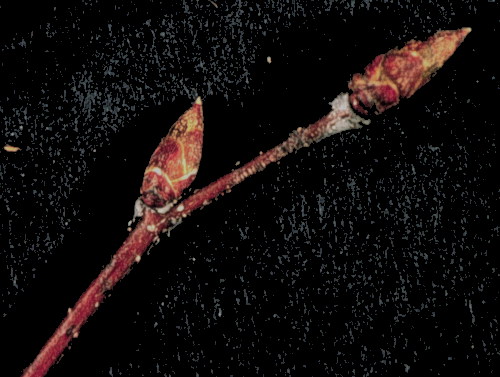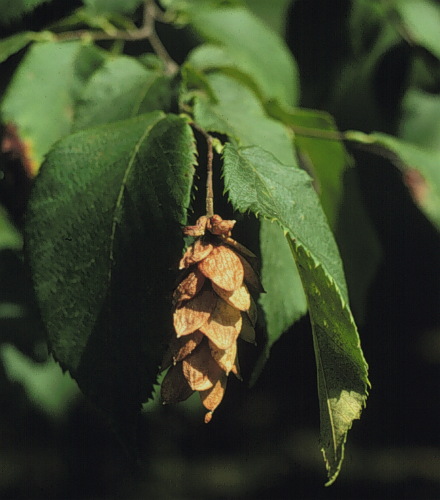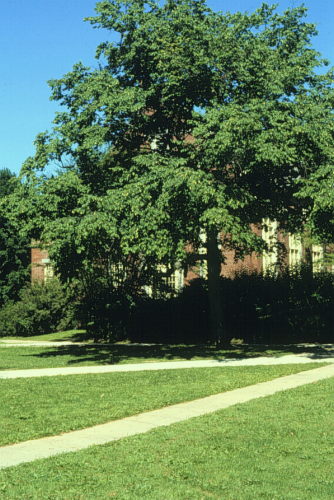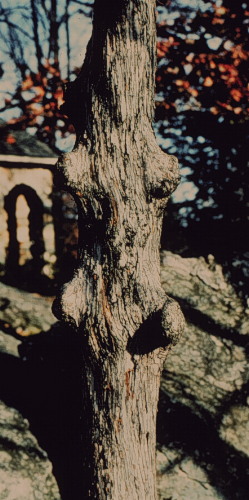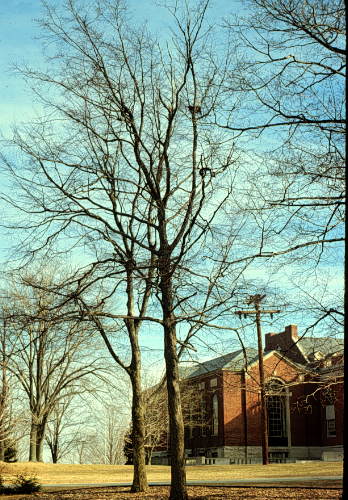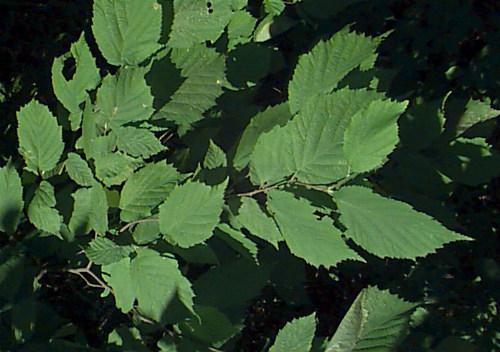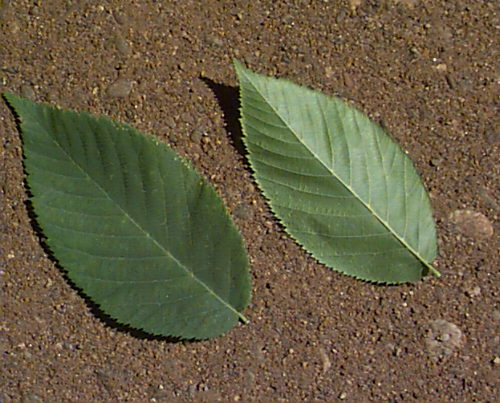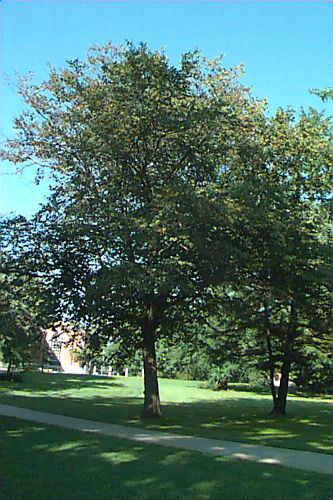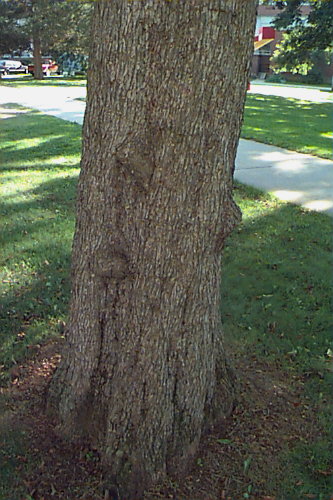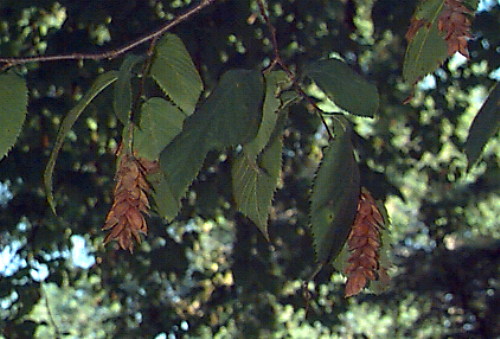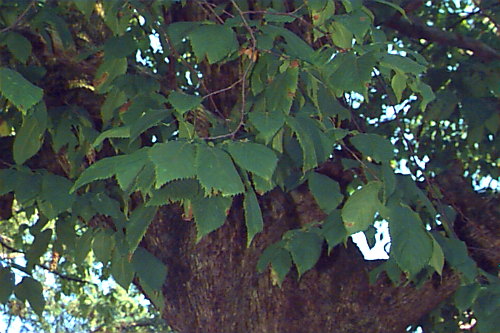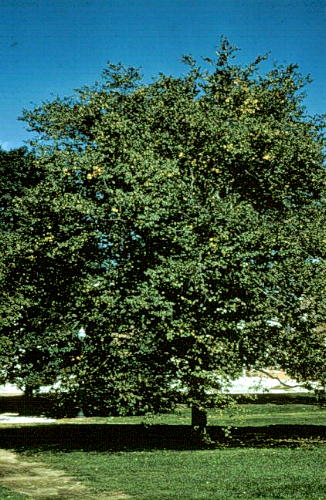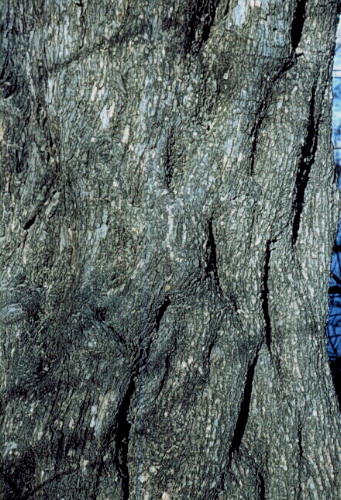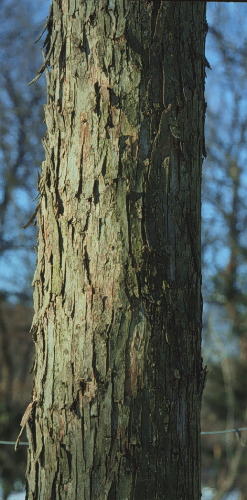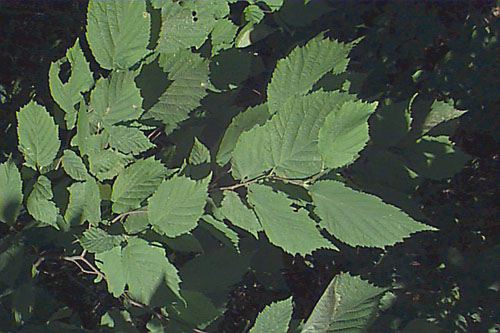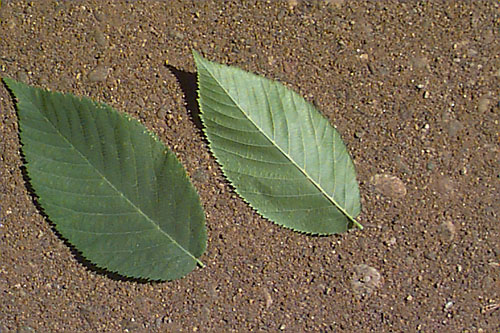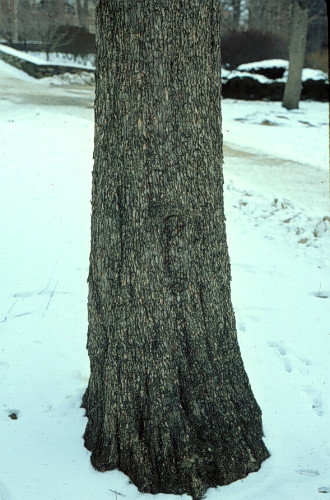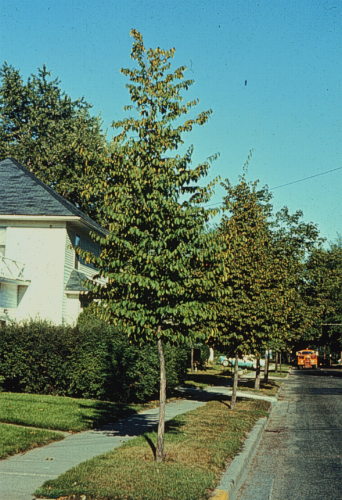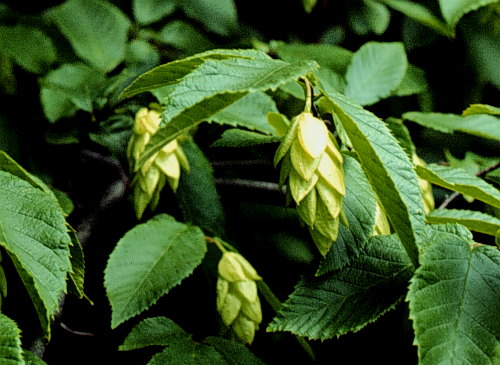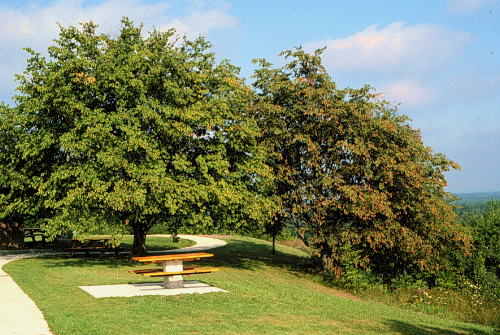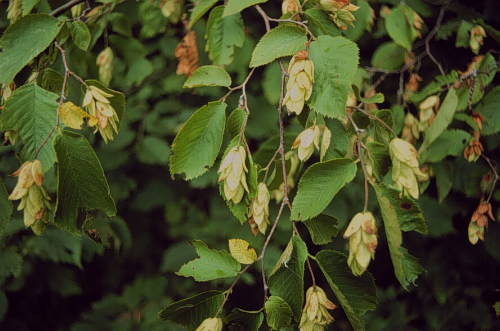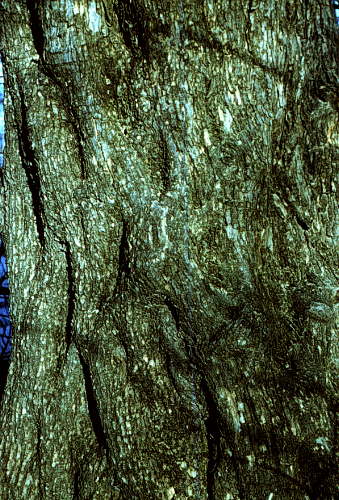Ostrya virginiana
American Hophornbeam, Ironwood
Betulaceae
ExpandHabitat
- eastern United States
- zone 4
- naturally occurs as an understory tree in dry woodlands
Habit and Form
- a small to medium-sized tree
- reaches 30' to 50' tall
- overall shape is ovate to pyramidal when young
- older trees are rounded
- branching is upright and spreading
- old trees exhibit more irregular branching
Summer Foliage
- simple deciduous leaves
- alternate leaf arrangement
- leaves are 2" to 5" long and half as wide
- more or less oval shape to leaves
- acuminate leaf tip
- doubly serrate leaf margins
- medium to dark green leaves
Autumn Foliage
- yellowish brown to orange
- not particularly impressive
Flowers
- male flowers are catkins in 3's
- not highly ornamental
Fruit
- small inflated pods in clusters
- a hard nutlet is inside each pod
- fruit clusters look like fruit of hops, hence the common name Hophornbeam
- fruit change from green to tan
Bark
- forms vertical strips which exfoliate at the ends
- color is gray brown
- trunks and main branches develop a fluted or "muscle-like" appearance
- bark and trunk features are ornamentally attractive
Culture
- full sun to partial shade
- best in slightly acid soil that is moist, cool and fertile
- can tolerate dry gravelly soils in partial shade once established
- can be difficult to transplant and slow to establish
- easily transplanted form containers are B&B
Landscape Use
- lawn tree
- street tree
- naturalistic areas
- for bark and fruit
Liabilities
- not tolerant of salt at all
- avoid roadside or seaside uses
- can be slow growing
- slow to establish following transplanting
- hard to find in trade
ID Features
- veins on leaves branch before reaching the leaf margin
- hop-like fruit clusters
- fluted trunk
- exfoliating vertical strips of bark
Propagation
- by seed
Cultivars/Varieties
- none
